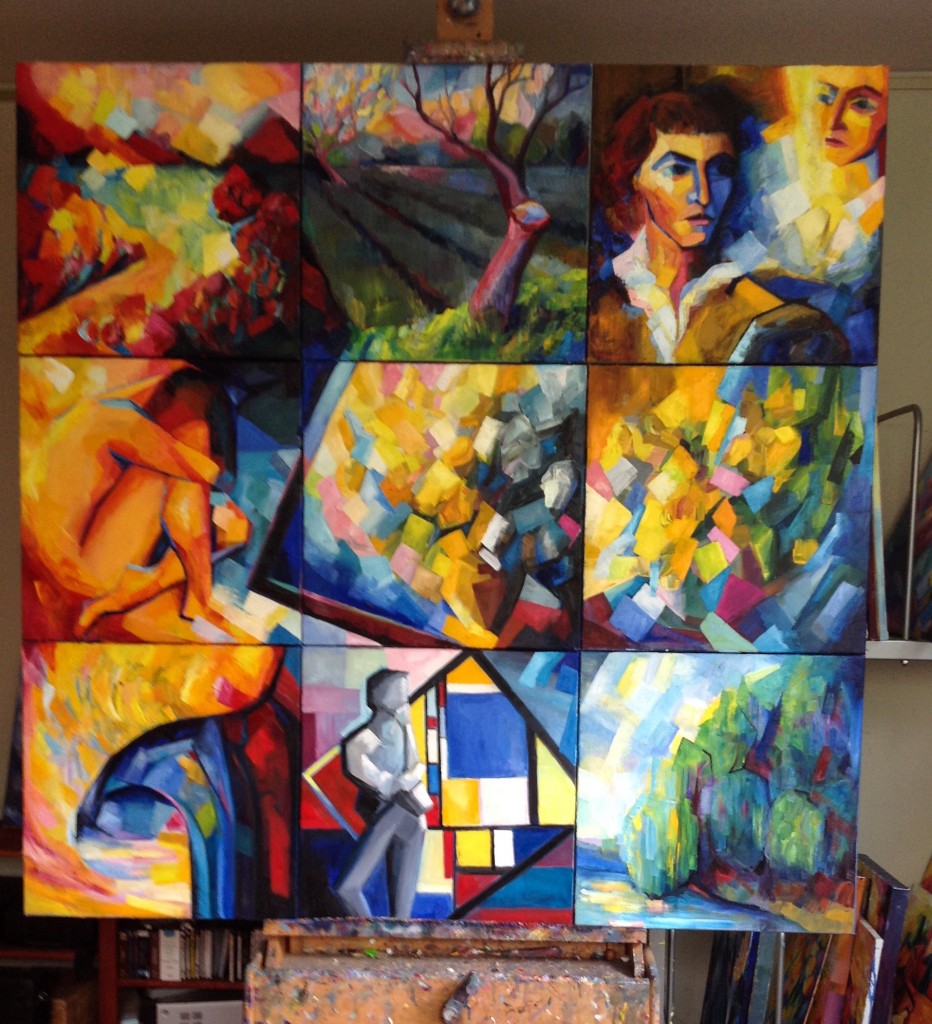Even though the core of this workday was dedicated to my “Art of Seeing” program, it began with two hours in the studio, with the first sonnets composition: an attempt to bring into the visible, apparent reality, into the presence, that glimpse of future seen over the weekend.
That glimpse was dominated by blues: a rain of blues falling down, in a large triangle; and a huge circle of reds going from foreground on the left to the background on the right. Yellow, in this vision, is but the “background” for blues: the tension between yellows and blues, mediated by the circle of reds. That was the general direction of today’s studio work, but it’s only a beginning.
The return of this composition (first started exactly four years ago, in 2012) is a cue for me to re-consider the meaning of these first “procreation” sonnets in the context of the sequence. The whole sequence is filled with mysteries, puzzles and paradoxes, but the procreation sub-sequence is challenging in its own way because it is so loosely connected to (one might even say: disconnected from) the main themes of the sequence. It feels, however, as though it has its rightful place here; that it has a part to play.
Shakespearean literature gives us a variety of different (more or less historically and poetically justified) ways to explain away this strange introduction to a series of poems about love and infatuation. But the “Sonnets in Colour” series imposes a slightly (or not so slightly) different mode of interpretation: it has no claim to scholarly objectivity, but necessarily involves subjective connection, personal urgency of meaning (however questionable this differentiation might be). And the theme of procreation wasn’t (and isn’t) relevant to me at all (and arguably, neither was it to Shakespeare at the time of writing).
That’s why, from the very beginning of the series, a more “abstract” meaning of the procreation sequences became more prominent in this interpretation: the role of giving in being; the impossibility (or, at the very least, the utmost fragility) of being without giving.
In retrospect, this sequence reads like Shakespeare’s first approach to the paradox of modern self, an grounded in the “self”’s intrinsic connection to nature, in its biological underpinnings. In the intervening years, this paradox has become the core theme of the sonnets (or at least, of the “Sonnets in colour”).
